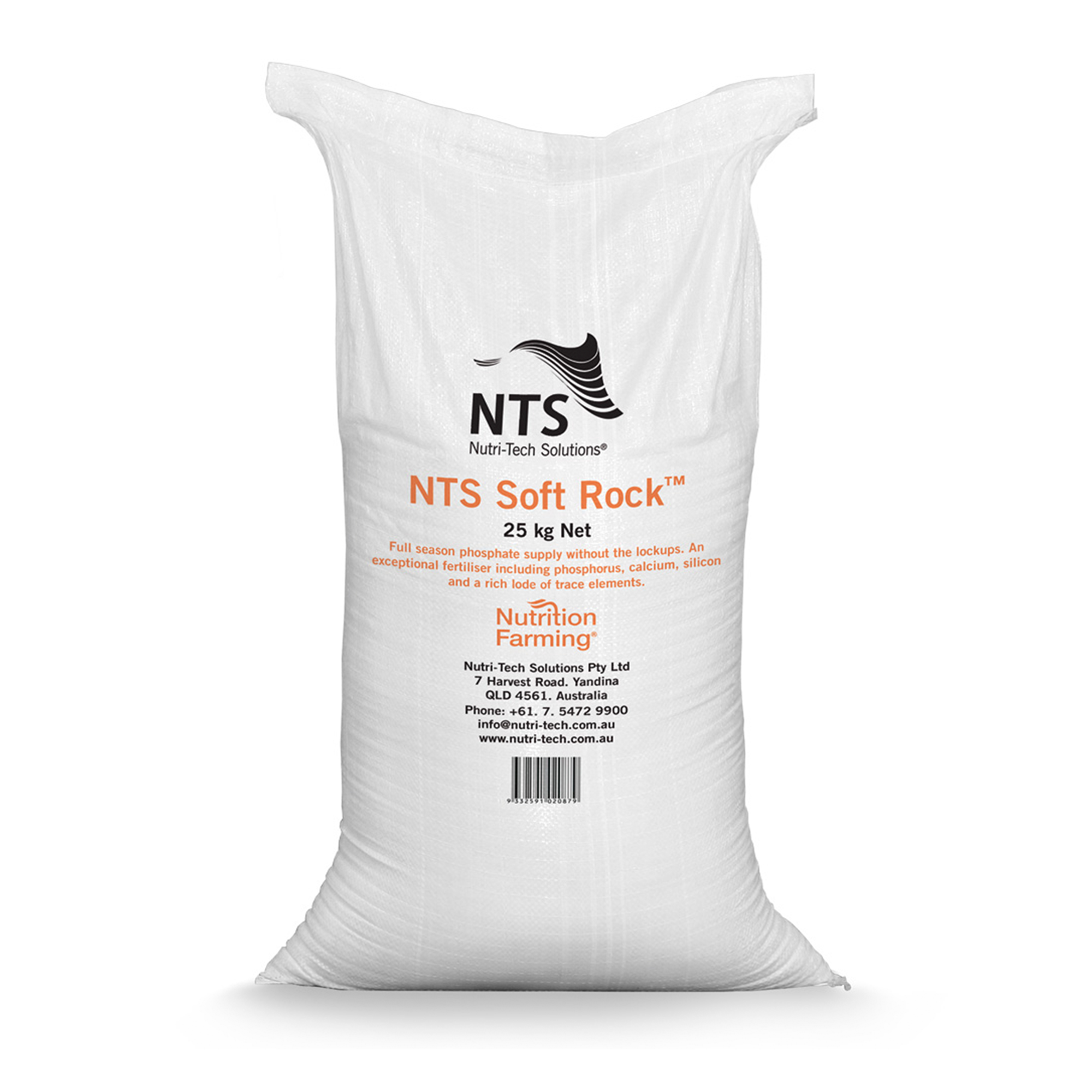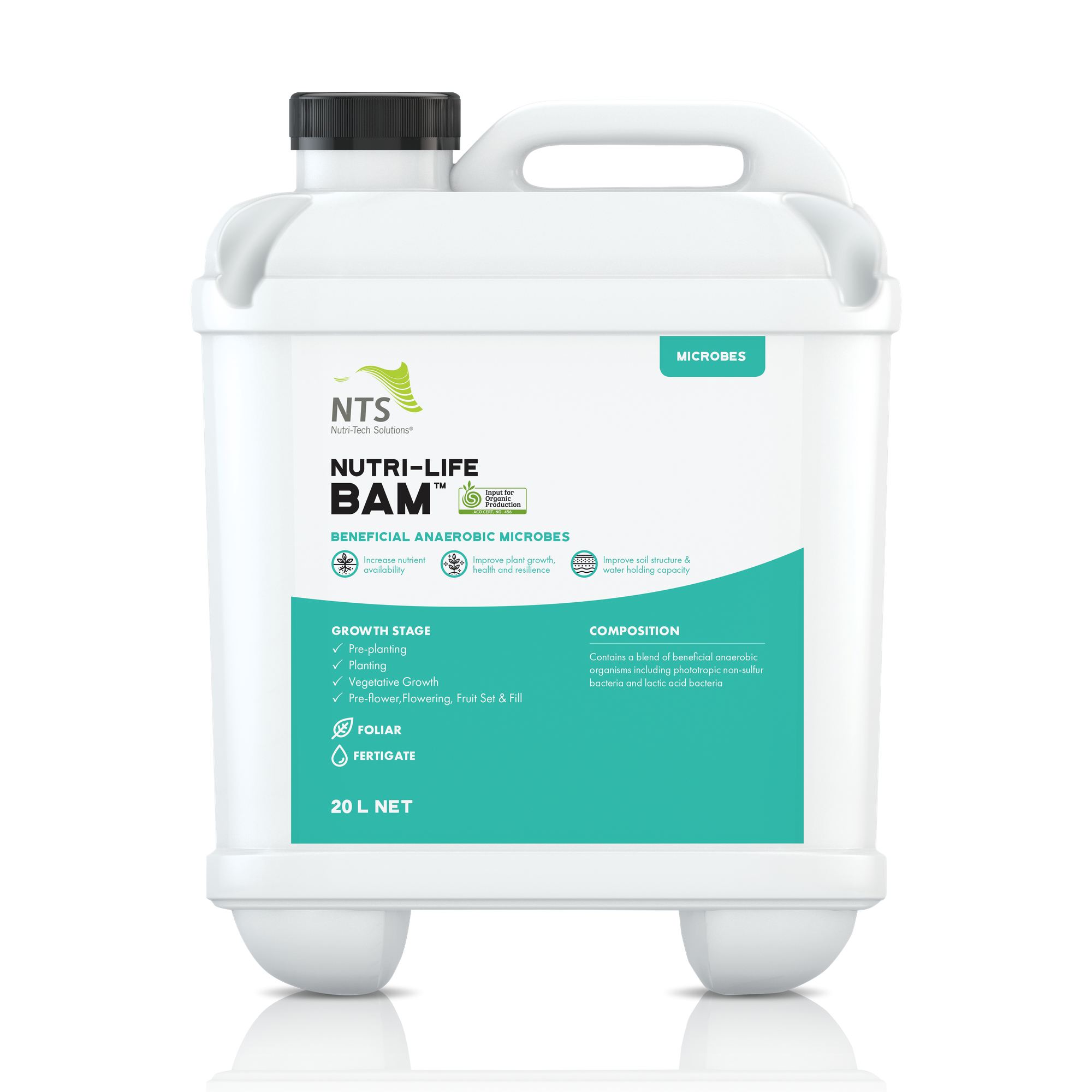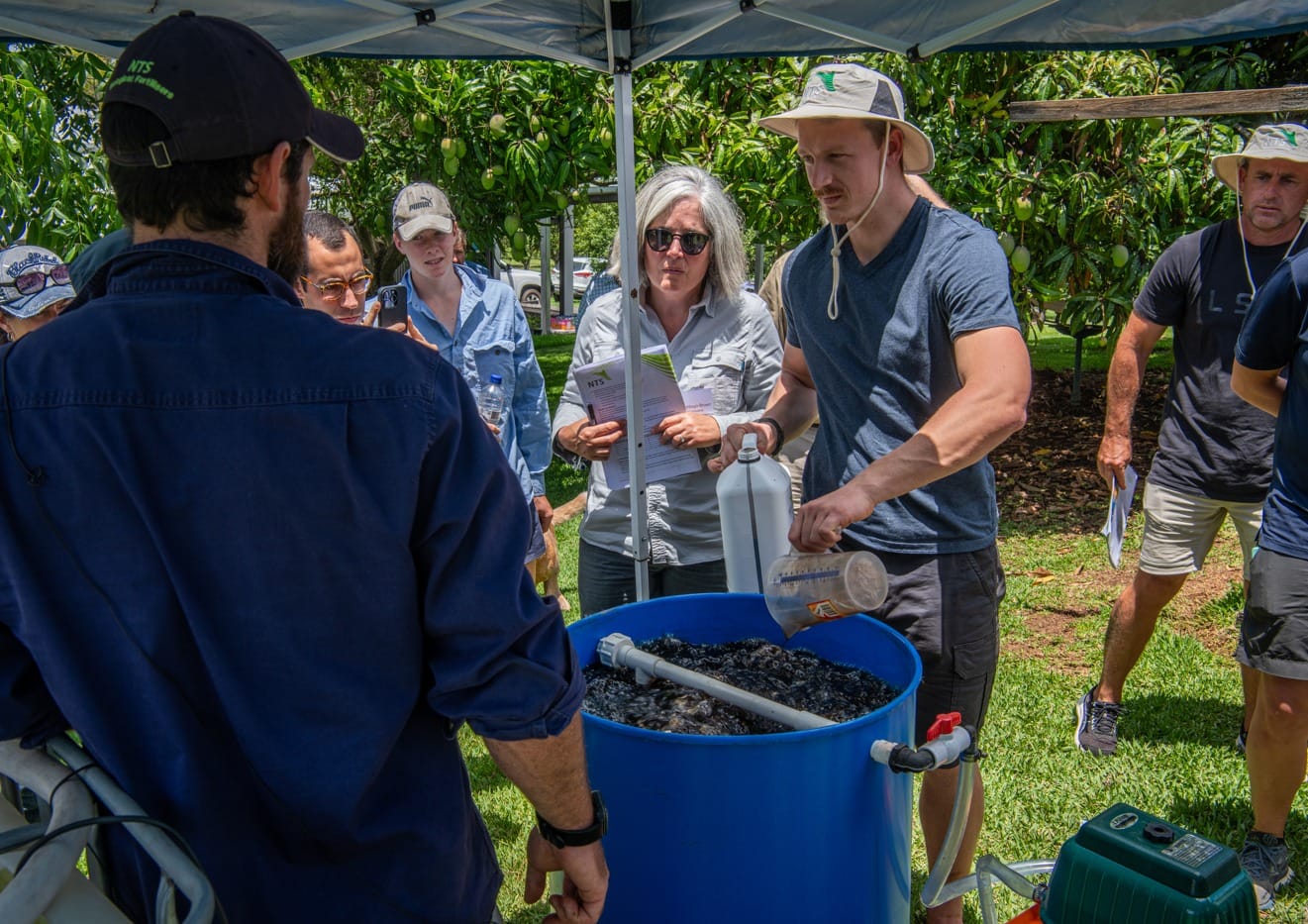🌱The Phosphate Priority - Part 1: Reclaiming, Recycling and Releasing P🌿

By Graeme Sait
There is no surprise to see that DAP/MAP are amongst the biggest-selling global fertilisers. Phosphate, the energy mineral, drives early root growth, and it catalyses the enzymatic reactions that fuel photosynthesis - the most important process on the planet. Glucose, produced by photosynthesis, is the building block of all carbon chemistry, including us!

Most of the enzymes driving the production of glucose from sunlight, water, and CO2 are phosphate-based. This includes the starting point for this miraculous process, ATP (adenosine triphosphate), which is often termed “the battery of life”. Essentially, you cannot produce sugar and grow crops profitably without P. That’s why it is listed amongst “The Big Four”, the quartet of minerals we like to optimise in plant tissue to maximise yield.. Calcium, magnesium and boron are the other power players in that key quartet.
Flowering and fruiting are maximised when adequate plant-available phosphate is present. Stunting, yield reduction, and delayed maturity are just some of the outcomes of inadequate phosphorus (P) supply.
The biggest single issue with water-soluble phosphate fertilisers is their inherent instability. In fact, there is nothing that comes close to this level of inefficiency. The P industry itself acknowledges that you only get 27% of the applied phosphate before it locks up and becomes part of a frozen reserve. Rock phosphate involves tri-calcium phosphate, where triple negatively charged phosphate is magnetically bonded to double positively charged calcium. Sulphuric acid or phosphoric acid is used to break this bond and to concentrate the newly created, water-soluble phosphate, but we have not changed the nature of the beast. The triple negatively charged phosphate ion seeks out potential partners, such as double-charged calcium and magnesium, or triple-charged iron, in red soils. Within six weeks, it has largely reverted back to insoluble phosphate complexes, and you have just lost almost 3/4 of your fertiliser investment. That loss is even higher in the red soils, where the lockup with iron can occur within just three weeks. At this point, you may be questioning how you might avoid wasting your hard-earned cash.

That’s a super valid question, but there is another reason why this mismanagement of phosphate should be avoided. It may be a new term for you, but it’s a serious environmental issue known as eutrophication.
This is where phosphate and nitrogen run off, creating algal blooms that poison waterways and suck the oxygen required to sustain fish and biodiversity. In general, phosphate is much more stable than nitrogen in terms of leaching potential. However, when we leave the soil bare and deplete the humus glue that holds soils together, we seriously increase runoff potential. The brave new world of climate change farming involves increasing weather extremes ,which erode precious topsoil (and the P it contains), and pollute our waterways.
Algal blooms have created dead spots in the ocean that are larger than small countries. In fact, a large algal bloom off the South Australian coast is currently seriously impacting the tourist industry in that State. It amazes me that there has been no discussion of the formative factors driving this bloom, and no effort to address the root causes. Perhaps one of my readers might forward this article to the decision makers in that State. There is a screaming need to improve our management of both P and N, because the Great Barrier Reef is the next cab off the rank. There are several ways we can lift our game, including the following.

1) Don’t apply P when it’s not required - this is a prime reason that you need to understand your own soil test, rather than taking advice from those with vested interests. There are so many times when we see recommendations for large doses of P in a soil that is already oversupplied. High phosphate shuts down potash, calcium, zinc, iron and copper. You paid more than you needed for something that directly impacts so many other important minerals, and you helped to pollute our waterways into the bargain. However, it doesn’t just stop at mineral impact. The plant shuts down its support for mycorrhizal fungi in high phosphate soils, so you also lost your access to this wonderful fungal P scavenger. That’s not a good outcome.
You rarely need more than 50 ppm of phosphate on your soil test. We try to never exceed 70 ppm, because that’s when the trouble starts. I’m talking, Mehlich-3 extraction here, because it is more versatile than the other extractions, and we see a closer relationship between this test and associated tissue test results.
30 ppm to 40 ppm is adequate on most other P tests. There is a caution here, and it is particularly relevant to an intensive situation, like vegetable production, where you have always used DAP/MAP as a starter. In this scenario, it is not advisable to go cold turkey and drop P, because of high levels on a test.. Provide a little soluble phosphate as a precaution, in case your natural P cycling has been chemically compromised by an industrial, extractive approach, i.e you have killed off the bugs that release and deliver P.
2) Stabilise and magnify your soluble P inputs. Always add Soluble Humate Granules (humic acid) at 5% with your DAP/MAP or super phosphate inputs. They dissolve together and you form a stable phosphate humate that will not lock up or leach. The carbon-rich humic acid also buffers the sizzling power of raw phosphoric acid, after the ammonium breaks from DAP/MAP in the soil. These unbuffered acid phosphates are chief protagonists in the decimation of mycorrhizal fungi in our soils, as the acid release fries up the fragile hyphae filaments.

If you need some science to validate this humate stabilising phenomenon, there are several peer-reviewed published papers quantifying the benefits of the humate addition. It’s not just about buffering the burn, as humic acid also increases uptake of P by over 30%, through something called cell sensitisation. It also stimulates and supports the phosphate-solubilising fungi and bacteria that can provide access to your frozen P reserves. One of the better papers describing these benefits is a 1995 paper called"Humic Substances and Plant Nutrition”, by Varanini & Pinton.
An important caution here relates to your source of humic acid. The humic acid granules must be soluble. There are several products on the market that are just brown coal in a granule. This is not soluble and will not create a stable phosphate humate. Soluble humic acid is called a potassium humate because potassium hydroxide was used to solubilise the humic acid from the brown coal.

3) Make more informed choices when selecting phosphate inputs - There is most definitely a place for humate-stabilised, DAP/MAP in a situation involving a 100-day crop cycle. You often need that early root push, and you can’t afford to miss that kickstart. However, I find it much harder to justify these super unstable inputs in perennial crops like orchards, vineyards and pasture. Here, there is a much stronger argument for giving the gift that keeps on giving. I’m talking about materials like soft rock phosphate, guano and even activated hard rock phosphate.
One USDA study, comparing water-soluble acid phosphate to rock phosphate over 13 years, found the water-soluble P performed better in the first year, but the rock phosphate delivered ten times more P into the system, every year, for the 12 years thereafter.
At this point, it might be a good idea to look at my favourite natural phosphate source in more depth. Let’s explore the potential of soft rock phosphate
The Soft Rock symphony
It is no accident that Soft rock phosphate is considered a primary soil food amongst many Regen Ag adherents. To begin, let’s look at what it is and how it differs from hard rock phosphate and guano. Soft rock phosphate is a byproduct of the mining of rock phosphate to produce Super Phosphate, DAP or MAP. Some phosphate reserves have layers of the hard rock phosphate encased in a thin layer of clay. This clay (soft rock) has a slightly lower analysis than the hard rock, but more importantly, this clay is not suitable for treatment with acid to create DAP, etc. Hence, it is washed off the hard rock into settling ponds and must be sold separately. The good news is that this very fine clay is much more easily rendered “plant available” because it is so much easier for phosphate-solubilising organisms to feast on fine clay, rather than rock. Typically, a soft rock phosphate will include around 10% P, up to 30% calcium, 25% silica and a rich lode of trace minerals.

Like any natural phosphate material, it will always release more rapidly in soils with a pH below 7. One tip I will share here relates to soils that need both calcium and phosphate, which will have a lower soil pH due to the calcium shortage. Here, we see the best results, particularly in pasture systems, when we apply the soft rock phosphate before the lime. You are taking advantage of the better release achieved in more acidic soils. The calcium component of the soft rock will help satisfy the crop's immediate calcium requirements, while the P component of the soft rock will release more rapidly in soils with a lower pH.
Just considering the other natural phosphate options for a moment. Guano is derived from ancient seabird droppings. It typically has a higher analysis than Soft Rock, and it differs from hard rock in that it features a higher percentage of what’s called “citrate soluble P”. This is a measure of relative solubility and associated release time in the soil. Granular Guano, unlike rock phosphate, can be used as a starter fertiliser. We find the best response is a 50/50 combination of guano and DAP/MAP, with 5% Soluble Humic Acid Granules (preferably the high-quality, leonardite-based granules from NTS). Hard rock phosphate is more of a long-term prospect with a release pattern that will continue for years. However, there are some tips we shall soon discuss that can speed the release of P.
Another little tip, relative to all three forms of natural phosphate, relates to a simple strategy that can activate P release. If you have these materials analysed, you will find that they naturally contain large numbers of phosphate-solubilising bacteria. The addition of molasses into this phosphate, at the rate of 5 -10 litres per tonne, can seriously multiply these inhabitants and trigger more rapid phosphate release.

The final P tip relates to the benefits of chicken manure. Depending on local availability, this can be the bargain option, and it also contains good levels of N and K along with calcium, sulphur and a rich lode of trace minerals. You may be concerned about contaminants (hormones, antibiotics, etc) often found in raw, uncomposted manure. However, these unwanted tagons can be largely neutralised by in situ composting. This involves the application of 20 litres of DIY BAM per hectare with 10 litres of molasses.

In Part 2 of this article, we will focus on some new understandings in terms of unlocking frozen soil phosphate, in a segment called “The Great Release - New Tools to Tap Trapped P.
Happy spring planting, and may your Nutrition Farming endeavours bloom and flourish.

NTS Soft Rock™
Full-season phosphate supply without the lockups. NTS Soft Rock™ is a bio-friendly, colloidal clay-based rock phosphate.
A colloidal calcium phosphate that can never lock up, in stark contrast to all other phosphate sources. This exceptional fertiliser includes 8 – 9% phosphorus, 19.3% calcium, a high analysis of silicon and a rich lode of trace elements. A microbe-friendly bioavailable phosphate, which is an integral part of our soil regeneration program. This is one of the few phosphate sources that do not have problems with high levels of the heavy metal cadmium.

Nutri-Life BAM™
Multipurpose blend of anaerobic species for soil, compost and plant health.
This breakthrough probiotic blend contains lactic acid bacteria and purple non-sulphur bacteria, plus beneficial yeasts and microbial exudates.
To order or learn more, call NTS on (07) 5472 9900 or email sales@nutri-tech.com.au.
Certificate in Nutrition Farming

Our next iconic, five-day Certificate in Nutrition Farming® course is scheduled for Monday, 23rd - 27th March 2026.
Our last course was attended by growers and consultants from six countries. It was a wonderful learning opportunity where attendees enjoyed a wealth of education and inspiration from both our presenters and their fellow attendees. We only accept 40 bookings for these courses, so please register if you would like to attend.

